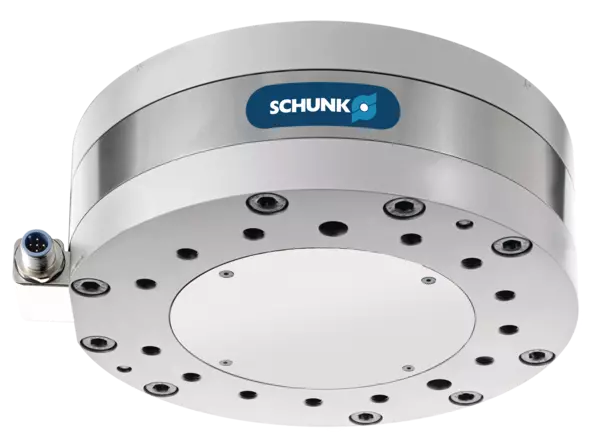The increasing collaboration between man and machine demands precision. This collaboration is revolutionising almost every industry, and the automotive industry is no exception. Robots are widely used in this industry. It is where the role of force torque sensors is highlighted. These components are crucial to ensure precision. They play a vital role in ensuring efficiency, safety, and performance in the manufacturing of vehicles. If you wish to learn about the importance of these sensors in the automotive industry, continue reading this article.
What is a Torque Sensor?
Torque sensors are crucial measuring devices that help measure the rotational torque or force applied to a rotating object. These devices are popularly used in several industries, such as robotics, automotive, aerospace, and manufacturing. The primary aim of using these devices is to maintain the performance and quality of the product.
A torque measurement sensor works on the principle of strain gauges. These gauges are thin strips of foil or metal wires that change their electrical resistance when strain is applied. When torque is applied to the rotating shaft, it gets slightly twisted. This twist causes deformation in the strain gauge that might compress or stretch it. The resistance of the gauge changes due to this deformation and is measured by an electrical circuit.
Automotive Torque Sensor
Although torque sensors are used in various industries, we will focus on their importance in the automotive industry in this post. The market for these sensors is growing rapidly. A major contributor to this growth is the high demand in the automotive industry. These sensors are increasingly used for better productivity. They help with enhancing the fuel efficiency of the vehicles. These sensors are also in demand due to the trends of condition-based maintenance and electrical power steering.
These sensors have numerous applications in the automotive industry. A rotary torque sensor is used to test gearboxes and clutch, strain management, and dynamic torque within the engine. Some other uses of these measuring devices include testing brake, suspension, and powertrain systems. With an aim to enhance fuel efficiency, these sensors also measure horsepower.
Numerous automotive manufacturers also use in-vehicle torque sensors. These sensors are utilised to map engine torque and calibrate automatic transmission. Manufacturers also use them in customer-use testing and fleet to allow engineers to collect data under different conditions.
Some other ways highlighting the use of these sensors in the automotive industry include-
Monitoring vehicle driveline condition
Trials of Vehicle Power Efficiency
Measuring tractor power take-off
Measuring load, stress, and strain on heavy vehicle axles
Measuring high-speed torque with Formula 1 teams
Challenges Faced While Measuring Torque in Automotive Industry
In the complicated web of automotive engineering, torque sensors come out as essential. However, the implementation of these tools is not always simple. Measuring torque poses considerable challenges, especially in engine dynamics. Traditionally, engineers deal with including instrumentation to the flywheel, bridging the gap between the engine’s crankshaft and also a torque converter.
Likewise, the intricacies of CV (constant velocity) joints, important for keeping rotational speed across varying angles, present formidable obstacles to torque measurement. Space constraints exacerbate these challenges. Nevertheless, innovative solutions from manufacturers highlight the industry’s relentless pursuit of precision, steering around spatial limitations to uncover the complete potential of torque sensing technology.
How to Select the Right Torque Measurement Sensor?

A torque sensor is extremely helpful and beneficial for the automotive industry. However, these benefits will be available to you only if you choose the right sensors. Buying premium quality is undoubtedly the most crucial factor. However, there are certain other points you must consider. Some key considerations are mentioned below.
Force Range- The force sensors are uniquely designed to function within a preset force range. If they encounter a force out of their set range, they will not show accurate results. We are sure you do not want inaccurate readings. Therefore, choose a sensor that can work in a suitable force range according to your requirements.
Sensitivity- Another point to consider is the sensitivity of the sensors. Different applications have different sensitivity requirements. Some need highly accurate measurements. In such cases, you must choose sensors with high sensitivity. But what is the sensitivity of these sensors? It is the minimum change in force that they can detect.
Environmental Conditions- You must also consider the environmental conditions of your workplace while choosing these sensors. Evaluate various environmental factors like humidity, temperature, and the presence of corrosive substances. These factors can affect the performance of the sensors. Therefore, you must consider them and choose the one that has the required environmental resistance.
Physical Constraints- Physical constraints are next on the list. The size and shape of a sensor is also important to consider. This is why flexible and compact sensors have been developed for constrained spatial environments.
To Wrap Up
A torque measurement sensor plays a crucial role in varying industries. One of the most popular uses of these sensors is found in the automotive industry. They have completely revolutionised the production by enhancing efficiency and quality of the products produced in this industry. If you are looking for these sensors, Schunk is just the manufacturer. We offer multi-axis torque sensors. Also, we present the most suitable sensors that can be used in constrained spatial environments.
Frequently Asked Questions
What is a torque measurement sensor?
A Torque sensor is a measuring device used to measure the force or rotational torque applied to a rotating object.
What are the use cases of a torque sensor?
Torque sensors are used in numerous industries for various applications. They are used in robotics, automotive, aerospace, and manufacturing industries.

